Company: SwagMagic, a corporate gifting SaaS platform serving B2B clients with a global swag management solution.
Challenge
SwagMagic’s sales team was overwhelmed with leads of varying quality. In B2B, particularly in corporate gifting, purchasing decisions often involve multiple stakeholders, including end-users, decision-makers, and procurement teams. The company struggled to determine which incoming leads were likely to convert into sales.
Sales representatives spent significant time chasing lukewarm or poor-fit leads, while high-potential prospects were not prioritised correctly. This inefficiency led to longer sales cycles and wasted time on unqualified leads. SwagMagic needed to improve lead quality – identifying the best leads faster to shorten the sales cycle and improve close rates – without significantly increasing headcount or marketing spend.
Strategy: AI-driven lead scoring and targeted engagement
SwagMagic turned to predictive analytics and AI to transform how they qualified and managed leads. Their approach consisted of several key components.
Aggregating data for insights
The first step was ensuring that rich data was captured for every lead. SwagMagic integrated data from website behaviour, email engagement, social media interactions, and CRM records into a unified system.
This 360-degree view of lead activity provided the foundation for analytics. By tracking intent signals – such as whether a prospect company’s employees visited pricing pages, opened multiple marketing emails, or engaged on LinkedIn – the company could consolidate digital footprints to enhance predictive accuracy.
The more data fed into the predictive model, the more accurately it could assess lead quality.
Defining what a high-quality lead looks like
Using historical data, the team developed an ideal customer profile and identified the key characteristics of leads that had converted into customers in the past.
For example, they discovered that enterprise prospects engaging with specific types of content or job titles were more likely to close deals. These insights were used to train a predictive lead scoring model.
Machine learning analysed past deals to determine which behaviours and attributes were most predictive of conversion. Similarly, HES FinTech leveraged three years of CRM data to build a predictive model, incorporating factors such as lead source, company size, and industry to identify conversion patterns. This kind of historical analysis is crucial in training AI to recognise what constitutes a high-value lead.
Automated lead scoring
Once the model was developed, every new lead that entered the pipeline was automatically assigned a lead score (e.g., on a scale of 0 to 100 or 0 to 1).
SwagMagic’s AI-powered CRM analysed lead behaviour and attributes, outputting a data-backed score indicating conversion likelihood. For example, a director-level contact from a target industry who repeatedly visited the pricing page might score very high, whereas a student downloading a whitepaper would receive a low score.
The sales team defined a threshold – if a lead’s score exceeded a certain cutoff, it was classified as sales-ready (a hot lead). If the score was lower, the lead was placed into a long-term nurture track or disqualified. This removed guesswork from lead qualification, giving sales representatives a clear framework for prioritisation.
Prioritising high-scoring leads
The biggest operational change was in lead routing and time allocation. SwagMagic’s most experienced salespeople focused their efforts on high-scoring leads first. One team member noted that predictive scoring allowed them to dedicate almost all their time to top-tier opportunities, dramatically improving productivity and results.
Lower-scoring leads were not ignored but were handled by business development representatives (BDRs) or automated marketing sequences until they engaged further. Leads under the threshold received automated follow-up emails, educational content, or periodic check-ins to keep them warm.
This two-tiered approach (fast-tracking hot leads while slow-tracking colder ones) ensured that high-value sales resources were used efficiently, while still nurturing lower-priority leads.
Personalised engagement using AI insights
Beyond scoring leads, the predictive system provided insights into each lead’s interests and behaviours. SwagMagic’s AI-driven CRM analysed lead interactions and recommended tailored content and talking points.
For example, if AI detected that a lead engaged heavily with pricing and ROI content, the sales rep led with a business case discussion. If a technical buyer spent time on API and integration documentation, outreach focused on product capabilities.
This data-driven personalisation reduced friction in the buying process. By engaging leads with the right message at the right time, SwagMagic improved response rates and accelerated conversion timelines.
This level of AI-driven scalability made leads feel understood and encouraged them to move forward more quickly. As SwagMagic’s CEO noted, using AI to tailor interactions removed unnecessary steps in the sales funnel, shortening time to purchase.
Continuous model improvement
Predictive analytics is not a one-off project. SwagMagic designed its system to continuously learn. As new leads converted (or failed to convert), that data fed back into the model, refining predictions.
The company also monitored how lead scores correlated with actual outcomes, adjusting thresholds as needed. Over time, the model became more accurate at identifying the best leads.
Additionally, AI surfaced the key attributes that most strongly predicted conversion. For instance, if the model identified that CTOs from tech firms with 500+ employees were highly likely to convert, marketing could refine campaigns to target more of these prospects.
This feedback loop ensured ongoing improvements in both lead quality and marketing strategy.
Results: Higher lead quality, shorter sales cycle, better conversion
After implementing predictive lead scoring and related changes, SwagMagic saw clear improvements.
Better qualification = higher conversion rates
Within the first six months, the team witnessed a 30% increase in conversion rate for their leads. In context, this likely refers to the lead-to-customer conversion rate. The uplift was primarily due to a sharper focus on high-potential leads and engaging them in a more relevant way.
By concentrating sales efforts on leads with a high propensity to buy, win rates naturally improved. A B2B marketing agency leader who implemented a similar predictive scoring approach reported an 18.6% increase in close rate after shifting focus to top-tier leads. SwagMagic experienced a comparable boost in efficiency.
This translated into a significant increase in marketing ROI and sales productivity—more deals were closed per 100 leads than ever before.
Shorter sales cycle and improved efficiency
With AI-powered lead prioritisation and personalised outreach, SwagMagic’s prospects moved through the funnel faster.
- High-intent leads received immediate attention, reducing wait times and accelerating their decision-making process.
- Lower-priority leads were nurtured at scale by marketing until their behaviour indicated they were ready for sales engagement.
The result was a quicker time-to-purchase on average, which is critical in B2B sales. A faster sales cycle meant:
- Revenue was realised sooner
- The sales team could handle more opportunities over time
- Sales reps spent less time on unproductive calls and more time engaging serious buyers
One sales representative remarked that predictive scoring “kind of got my life back”, as it eliminated wasted time on poor-fit leads.
Higher lead quality and pipeline value
The overall quality of leads in the sales pipeline improved significantly.
- Fewer low-quality leads were passed to sales, as those with low scores were either filtered out or nurtured until they showed genuine interest.
- Marketing and sales noticed a clear difference—for example, a fintech firm using a similar system found that after implementation, the proportion of sales-ready leads remained consistently high, while unqualified leads were managed elsewhere.
- The average deal size increased, as predictive scoring ensured that sales reps focused on high-value opportunities.
For SwagMagic, relying on data meant that they were engaging mostly with leads that fit their ideal customer profile, which resulted in larger contracts and higher-quality pipeline.
Resource optimisation and cost savings
An often overlooked benefit of predictive lead scoring is resource efficiency. By filtering out low-probability leads, SwagMagic saved significant time and money.
If 6% of leads were deemed inefficient and removed, that equated to:
- 6% fewer wasted sales hours
- More time available for higher-quality opportunities
- Reduced need to expand the sales team to meet targets
A major insurance company’s predictive model achieved similar results, cutting out the worst 6% of leads and increasing overall profit by 1.5% within months.
SwagMagic’s sales team became more productive, and marketing efforts could be better targeted—for instance, refining campaigns to attract lookalikes of high-scoring leads.
As a result, the company’s investment in AI-powered lead scoring paid for itself through higher conversion rates and more efficient use of sales time.


 Whether you want to learn how to use LinkedIn, X or Facebook for marketing, or need to brush up on business skills like leadership, presentation skills or managing meetings, you will find something to enhance your professional skills with these on-demand courses.
Whether you want to learn how to use LinkedIn, X or Facebook for marketing, or need to brush up on business skills like leadership, presentation skills or managing meetings, you will find something to enhance your professional skills with these on-demand courses.